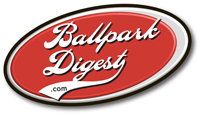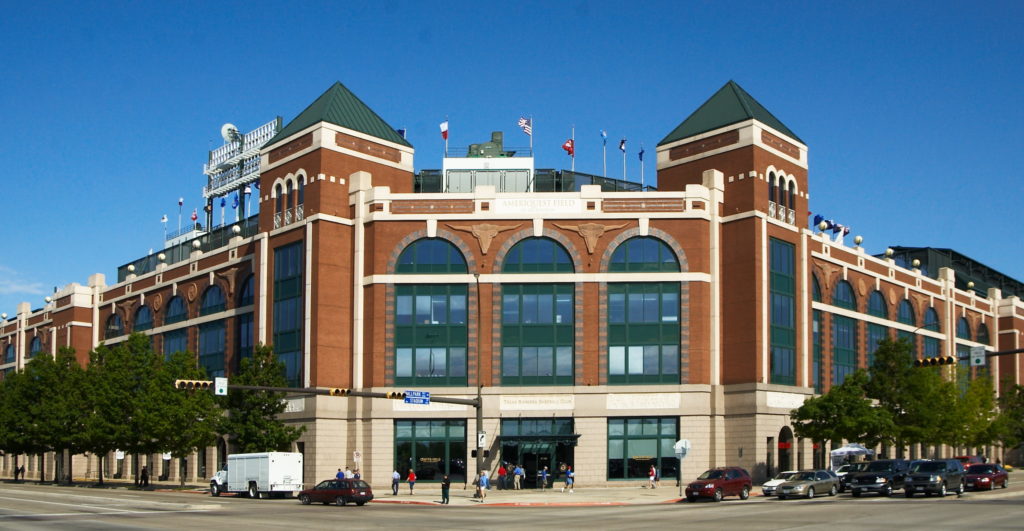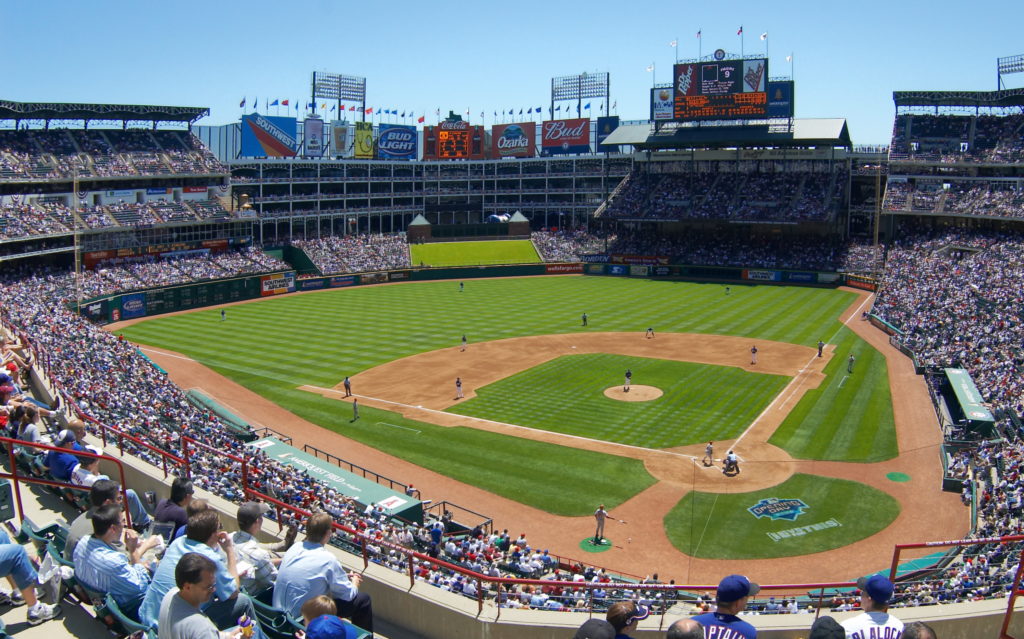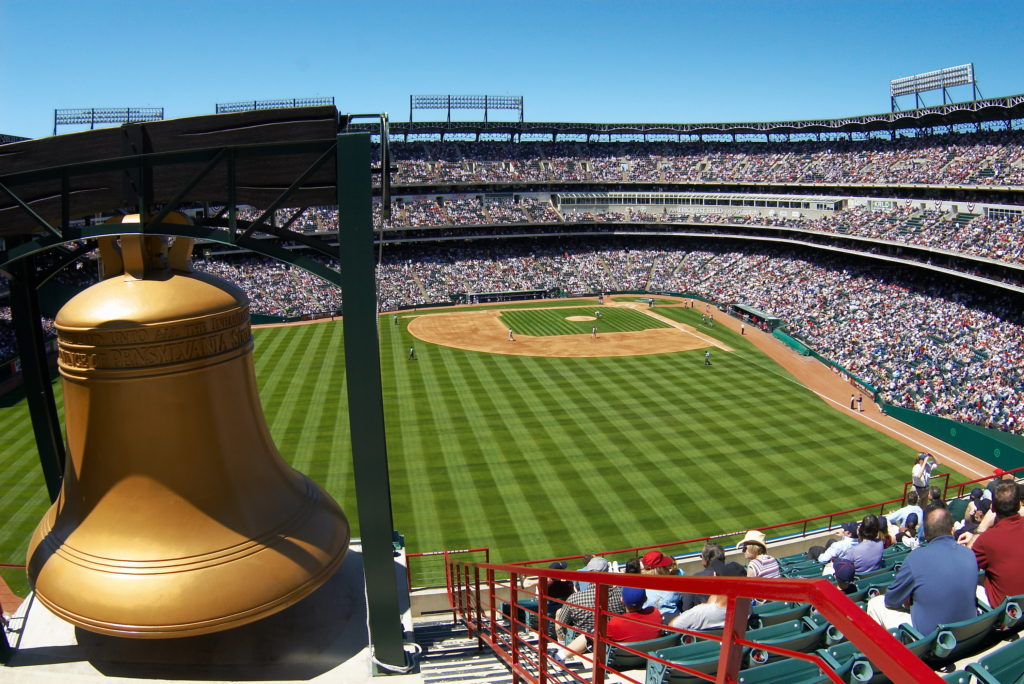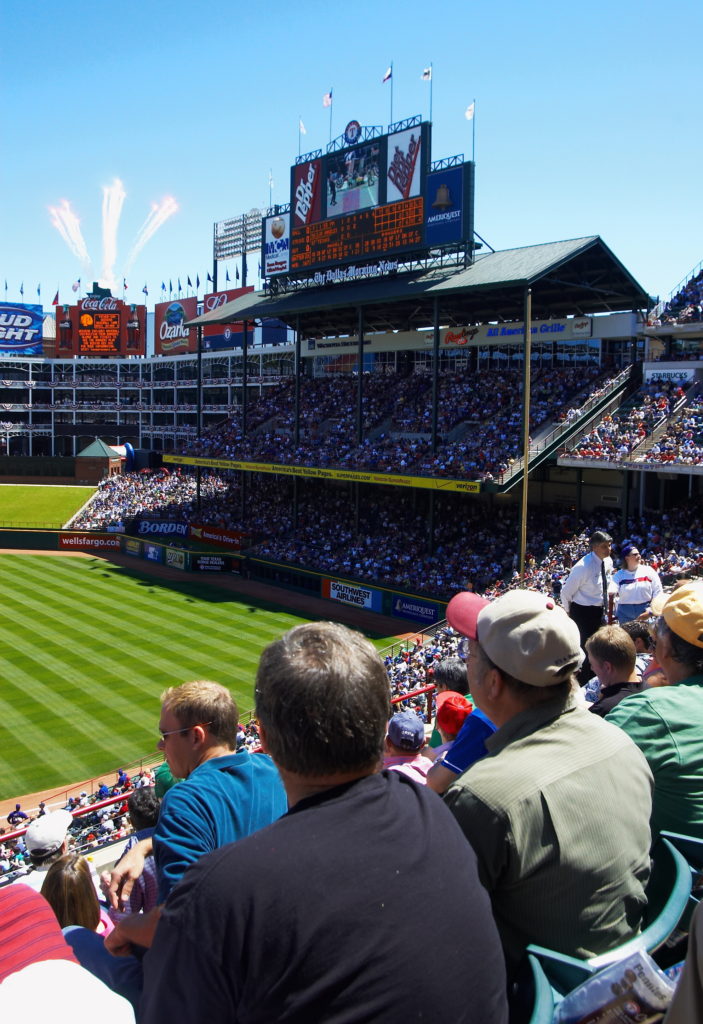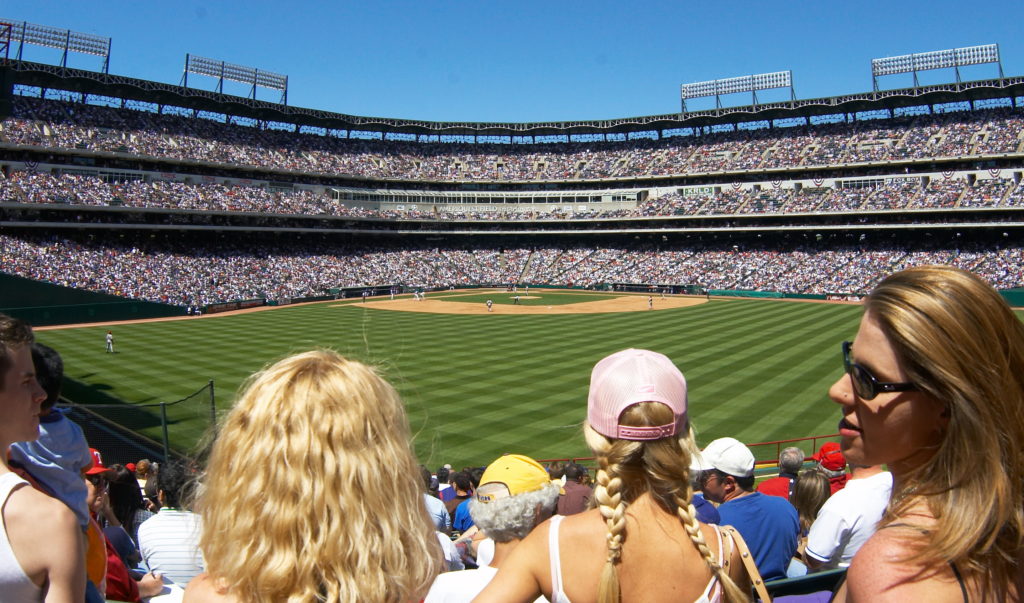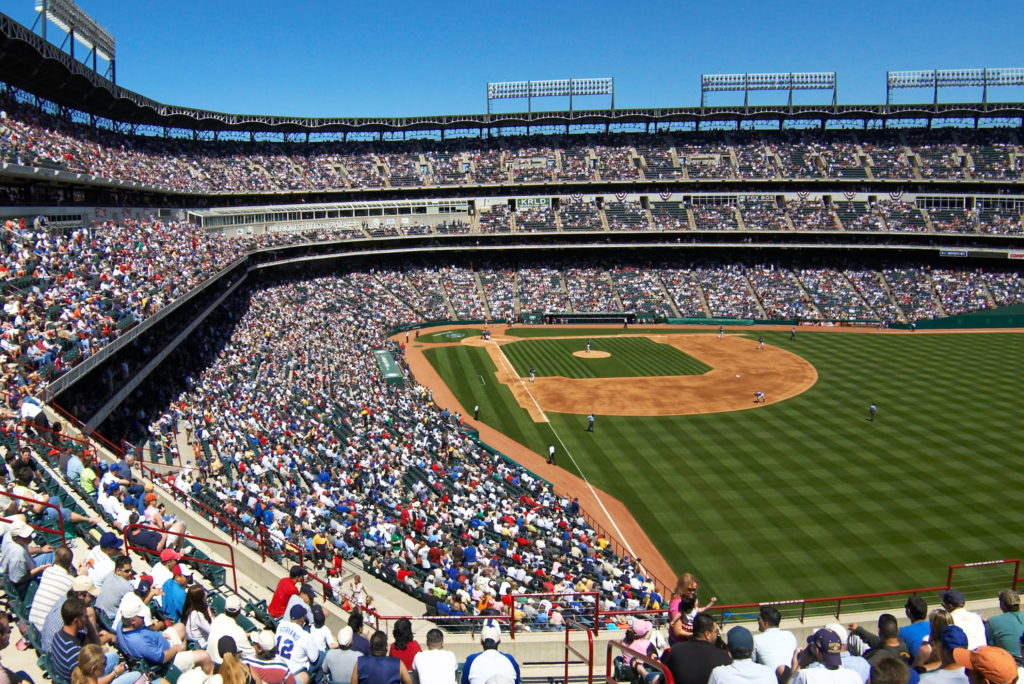Rangers Stadium in Arlington is a sprawling, retro facility that feels more like a downtown ballpark than what it is: a surbuban facility.
Year Opened: 1994
Capacity: 49,288
Architect: Design Architect, David M. Schwarz Architectural Services of Washington, D.C.; Architect of Record, HKS
Dimensions: 332LL, 390LC, 400C, 407RC, 381RC, 377R, 325RL
Playing Surface: Grass
Website: http://texas.rangers.mlb.com
Phone: 817/273-5100
League: American League
Parking: The parking situation at Rangers Ballpark in Arlington is surprisingly limited, considering the ballpark is located in an office park in suburban Arlington. Be prepared to pay at least $5 for parking if you park in the lot of a local business; the Rangers charge $10 for the lots closest to the ballpark, while valet parking runs $20.
Address/Directions: 1000 Ballpark Way, Arlington. Take the Rangers Ballpark in Arlington exit from Interstate 30. Arlington is located between Fort Worth and Dallas.
When you visit a ballpark, you want to feel like the ballpark belongs where it was built. A sense of place, as it were.
But there’s really no sense of place with Rangers Ballpark in Arlington, the home of the Texas Rangers. Of course, part of the problem is that the ballpark is located in the midst of a rather bland office park in suburban Arlington. There is a definite style to suburban ballparks — think Minnesota’s Metropolitan Stadium, Milwaukee’s County Stadium or the Rangers’ original home, Arlington Stadium. It’s no surprise the Rangers and the team’s architects wanted to avoid that style, but the problem remained: since there was no ballpark style really suited to the location, what should the new ballpark look like?
This being Texas, there really was only one logical response: create big-ass structure totally out of place with its surroundings. Really, Rangers Ballpark in Arlington is a downtown ballpark having more in common with Coors Field and Oriole Park at Camden Yards than any other suburban ballpark past or present. It has all the retro accouterments: exposed steel, brick exterior, asymmetrical outfield dimensions and the occasional odd element.
Of course, if you’re building an urban ballpark in a suburban setting, you need to play some additional tricks to make it feel urban. At Rangers Ballpark in Arlington, an office building is part of the outfield area. It serves an economic purpose — the suites are leased to businesses as a source of income, although tenants do have a rather distant view of the ballpark from their balconies — but it also serves an aesthetic purpose: it lends an urban atmosphere to the proceedings.
The same with the seemingly-out-of-place bleachers in right field: the section looks like something added after the fact to the park. But the effect is Disneyesque: there’s no functional purpose to bleachers with obstructed-view seats, and the section shares the same infrastructure as the rest of the ballpark. Now, this certainly is not a fatal flaw, but it is emblematic of the forced nature of the ballpark.
The irony is that Rangers Ballpark in Arlington probably could not have been built in a downtown location because the place is huge. All in all, the ballpark occupies 1.4 million square feet; Minute Maid Park, which occupies a pretty large footprint on the edge of downtown Houston, is only 1.2 million square feet. It’s an imposing building as well: the outer walls are 114 feet high, amply decorated with lots of longhorns.
After entering the ballpark, your first order of business should probably be heading directly to your seat and getting your bearings. It can take a while to get from Point A to Point B at Rangers Ballpark in Arlington, especially if you’re sitting in the Club Level or the upper deck. There are only three sets of escalators in the ballpark — first base, third base and behind home plate — but you may prefer to walk up and down on the nearby ramps.
Now, having said this, let’s say the entire ballpark experience was not nearly as negative as you’d assume from these introductory paragraphs. When you have lots of space, there’s a lot you can offer, and the Rangers offer plenty to occupy your time at the ballpark. Like many new MLB ballparks, Rangers Ballpark in Arlington is highly sectionalized. A concourse rings the entire main level and brings you past multiple gift shops, a kids’ play area in center field, a baseball museum (closed on opening day — the Rangers rented it out for a private occasion, which may have been the better financial decision but the stupider decision in not pleasing the other 49,000 fans on hand for the sellout) and a ton of concession stands. The second level — the Club Level — features some more intimate air-conditioned concessions areas and bars.
And chances are pretty good you’ll like your seats once you get to them. Every seat in the park is pointed to the outfield, and while the entire ballpark sprawls, the actual seating bowl and playing field are pretty intimate. Probably a little too intimate — the warning track surrounding the stands actually juts into fair territory (as you can see below) as there’s not much foul space, and the ballpark as a deserved reputation as a bandbox.
CONCESSIONS
This being Texas, you can expect BBQ available somewhere in the ballpark. The 100+ concession stands are grouped by theme at the ballpark, so there are separate BBQ stands featuring smoked turkey legs, beef sandwiches and more. Other food stands feature catfish and Tex-Mex specialties. A Starbucks stand specializes in Frappacinos, not hot coffee.
You’ll also find the normal ballpark staples at Rangers Ballpark in Arlington. A Chicago dog runs $7 while a jumbo hot dog (complete with grilled onions) costs $4.50 and a foot long costs $6. Go for the jumbo dog: like everything in Texas, it’s larger than normal.
The tap-beer selections are limited on the main level: Lite, Coors Light, Shiner Bock and Bud, all costing $7. You’ll find a better selection where bottled beer is offered, including Shiner Bock, Labatt Blue, Heineken, Amstel Light and Sam Adams. There’s a wider selection of beers on the Club Level, where most of the concession stands are enclosed and air conditioned; for instance, an Irish bar features Guinness on tap. (Speaking of the Club Level: it also features wider-than-normal seats and wait service.)
There are also sit-down restaurants at the ballpark. The Rawlings All-American Grille is basically a large sports bar with about a third of seats providing a view of the action. The Bullpen Grill (located in The Diamond Club, above Section 5) features an all-you-care-to-eat buffet, while the team’s offers several all-you-can-eat sections.
FOR THE KIDS
The Coca Cola Sports Park in center field features a wiffle-ball diamond (the Rangers charge a fee to play, but kids get to keep a plastic bat), speed-pitch booth, temporary tattoos, a photo booth and a batting cage. It’s also a place to just hang out and watch the game, as it features picnic tables and a cooling mister.
Also, Captain’s Corral features kid-sized concessions.
PARKING
Parking situation at Rangers Ballpark in Arlington is surprisingly limited, considering the ballpark is located in an office park in suburban Arlington. The Rangers control 13 lots surrounding the ballpark, but many of them are small and some are remote — so remote the Rangers run a shuttle between them and the ballpark. In addition, the Arlington Trolley runs between local attractions and designated dropoff points. Be prepared to pay at least $5 for parking if you park in the lot of a local business; the Rangers charge $10 for the lots closest to the ballpark, while valet parking runs $20.
BALLPARK HISTORY
Rangers Ballpark in Arlington opened on April 1, 1994, replacing Arlington Stadium as the home of the Texas Rangers. It originally was named the Ballpark in Arlington, and then renamed Ameriquest Field in 2004. In 2007, it was renamed Rangers Ballpark in Arlington after the Rangers terminated the 30-year, $75-million naming-rights deal.
